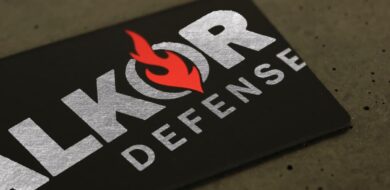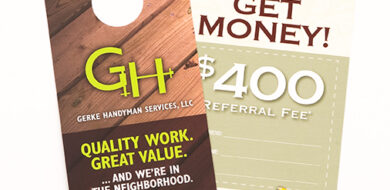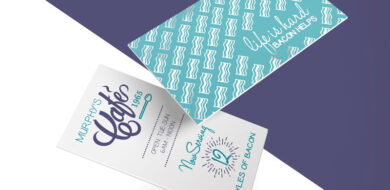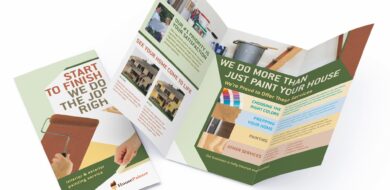Newsletter Folds and Fold Templates
Newsletters: Know When to Hold ‘Em, Know When to…
Newsletters are one of the most popular printed pieces used for marketing, seminars, product launches and direct mail pieces. Newsletters also are meant to be folded. So, when formatting a newsletter that includes any folds, proper measurements and panel sizing is essential for a professional, good-looking printed piece.
The types of folds that are available are numerous, and what follows are downloadable examples of newsletter templates for some of the most popular and often used folds that will make you and your printer very happy.
Half Fold
Self-explanatory, the half fold, while basic in design, gives you an easy to open, “book style” fold. This fold is just right for 4 page newsletters, and can be used both for standard 8.5 x 11, 11 x 17 and custom sizes.
- Half fold templates:
- 8.5 x 11 Half Fold
- 8.5 x 14 Half Fold
- 11 x 17 Half Fold
Tri-Fold
The trifold or “letter fold” is a great way to scale down an 8.5 x 11″ to fit into a standard #10 envelope for a direct mail piece or to be tabbed and mailed on its own. Also, it is perfect in an information rack at visitor centers, as it fits well with the other pieces, but offers a larger, more visually impressive piece when opened up.
One point to remember about tri-folds is that each fold panel is slightly different in size, with the “front” panel being the largest (widest) to accommodate the other folds. This ensures a sharp looking finished newsletter when folded.
- Tri-fold templates:
- 8.5 x 11 Tri-fold
- 8.5 x 14 Tri-fold
- 11 x 17 Tri-fold
Half / Tri-Fold
This fold is perfect for newsletters. This is a great way to accommodate a larger sheet, in this case an 11″ x 17″, and fit it into a #10 envelope. Good uses for this fold would be envelope mailed newsletters, city maps, real estate offerings and manufacturing product sheets, rich in content, specs and photos.
11 x 17 Half / Tri-fold
Gate Fold
A gatefold (either open or closed) when used in a newsletter works well for a menu style piece and offers a unique way of extending images across the folded sections, adding some distinction to your printed piece. A closed gate fold will appear similar in shape to a tri-fold, and an open gate fold will be twice as wide.
One point to remember about gate folds is that each fold panel is slightly different in size, with the “front” and “back” panels being the largest (widest) to accommodate the other folds. This ensures a sharp looking finished newsletter when folded.


- Closed gate fold templates:
- 8.5 x 11 Closed Gate Fold
- 11 x 17 Closed Gate Fold
- Open gate fold templates:
- 8.5 x 11 Open Gate Fold
- 11 x 17 Open Gate Fold
Large Format Tri-Fold
While this is a “standard” tri-fold, the main difference is the size of the sheet you are starting with. Using an 11 x 25.5″ sheet, you will end up with a finished product 8.5 x 11″ – a standard size of paper that is common to everyone. But, when unfolded, you quickly realize the real estate is much more, providing ample space to showcase big photos, maps, detailed product specifications and when combined with a thick paper stock, produces a news-worthy newsletter.

11 x 25.5 Tri-Fold
Final Thoughts
Different folds for your newsletter project requires more than just the angle of the paper-it requires knowing how the paper will respond to the fold itself. The direction of the paper grain has a lot to do with the quality of the fold. Paper that is folded parallel with the grain of the paper will fold much more cleanly. A crisper fold is produced because the paper fibers, or grain, are running in the same direction as the fold.
When a fold is done at right angles to the grain of the paper, the resulting fold may have a rough appearance. A ragged fold is created because all of the fibers are folded at one time creating resistance to the folding action. This rough appearance of the fold can be very noticeable when folding heavy stocks.
Be sure to talk with your printer not only about things like paper stock and the direction of the folds, but talk with them about new ideas for folding and finishing work-more times than not, they have seen it all, and are familiar with the benefits and possible pitfalls a complex fold may create.
Another great place for ideas is your very own mailbox: review interesting pieces you receive, look at the sizes, ease of opening, how well it survived the mailing process and overall “look”. Folding doesn’t have to be tricky with our easy to use templates, and give one of our technical pre-press teams a call at PrintingForLess.com to find out how to make your piece a success.
Paper Samples
Give our helpful experts a call at 800-924-2041, or
Request a Quote





